We all aspire to have luxurious, fresh hair that is always going to look like we’ve just stepped out of the salon.
However, before you start pilling all sorts of products on your hair without any rhyme or reason, you might want to ask yourself one crucial question:
“What’s my hair type?”
As you probably already know, human hair tends to vary greatly when it comes to texture, thickness and levels of natural oil production and distribution.
That is why there is no “one size fits all” when it comes to hair care. For example, a product that works on oily, straight hair won’t be suitable for dry, curly hair and vice versa.
Hair is typically categorized in four broad types – marked with numbers 1, 2, 3 and 4. Each type is further divided into three categories (a, b and c), depending on how much curl is present in hair strands.
In everyday terms, hair belonging to type 1 is generally referred to as “straight”.
Most of us call type 2 hair “wavy”, while type 3 hair is usually referred to as “curly”.
Type 4 hair is typically characterized by densely packed S or Z-shaped coils or kinks.
The best method to figure out which category you belong to is by thoroughly washing your hair and letting it air dry. Avoid adding any styling product, as this might interfere with your natural hair texture.
Once it’s dry, you will get a clear picture of what your hair looks like in its most natural state.
On the other hand, you might already be aware of your hair type, but you’re not sure whether your current routine or style is suited to your particular subgroup.
In any case, keep reading to find out what kind of regimen you need to build in order to achieve those silky, luscious locks.
Type 1a
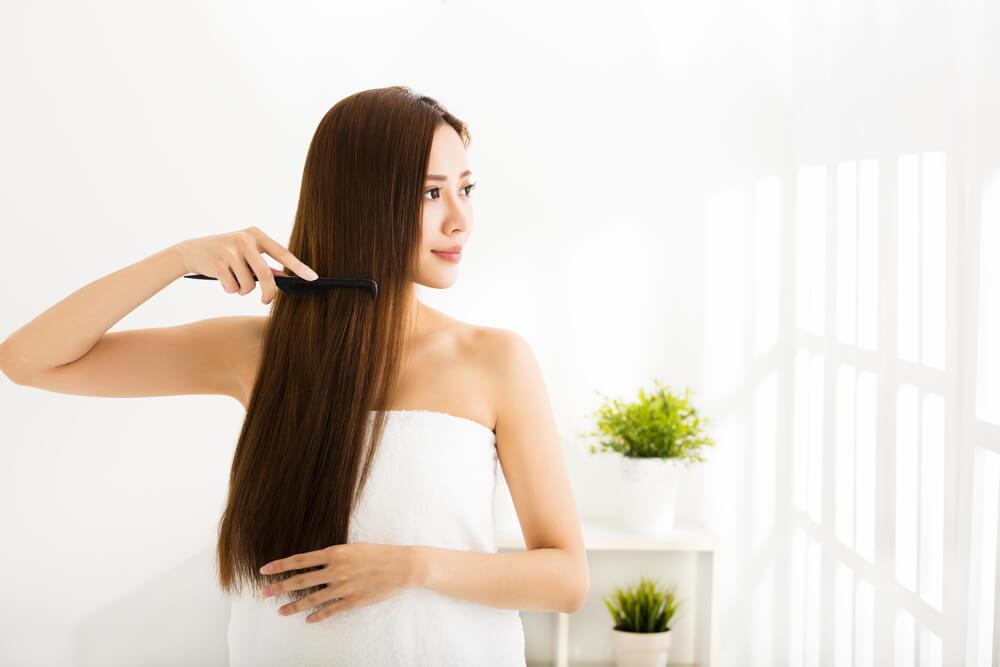
The straightest of all hair types, 1a is characterized by locks that have little to no ability to hold curl. The strands are pin-straight all the way from the scalp to the tips, meaning the oils produced in your follicles tend to travel faster down the shaft. This also might mean your hair tends to get greasier faster.
Because of the accelerated oil distribution, type 1a tends to lack in the volume department and, without proper hair care, runs the risk of looking flat and dull.
If your hair belongs to this category, steer clear of heavy, silicon-laden products that will only make your hair even more oily. Stick to light shampoos and conditioners, making sure you never wash your hair with scorching-hot water (this will only increase sebum production in your scalp).
When it comes to styling, whenever your hair needs an extra boost of volume, spray it with a bit of dry shampoo and you’re good to go!
Type 1b

Type 1b hair is still mostly straight; the biggest difference between 1a and 1b is that the latter does tend to bend ever-so-slightly, especially at the tips.
Most women who have straight hair fall into this category.
Since type 1b also tends to get oily, people who have this type of hair should avoid over-treating their hair with oil-infused products like waxes, pomades or heavy-duty conditioners.
Another thing you should keep in mind is to avoid touching your hair too much (due to transfer of oils). Moreover, when you do condition, make sure to only apply the product on the tips – placing conditioner in the upper parts of the strands will only weigh your hair down and make it look more limp.
Since type 1b is more pliable than type 1a, you can either straighten the odd bend, or give it a bit of a wave with a wide-barrel curling iron or hair rollers.
Type 1c

This type of hair tends to have the most body out of all type one categories. It also bends in several places and the strands can sometimes feel coarse.
Due to its texture, people who have type 1c hair should invest in a good conditioner to make sure their hair remains soft and silky.
The biggest upside to having 1c hair is that it’s super easy to style, even without heat tools.
Simply apply a palm-sized amount of mousse on your locks while your hair is still wet, scrunch it with your fingers and let it air dry. You will be left with beautiful, voluminous hair with subtle natural waves.
Type 2a

Type 2a is typically characterized by natural, beachy waves and a notable lack of frizz, even in sticky and humid condition.
Since this type of hair tends to be on the finer side, the key to styling 2a locks is to use just enough product to enhance the gorgeous S-shaped waves without weighing them down.
This means sticking to silicone-free conditioners and lightweight gels and mousses.
Girls with type 2a hair are blessed when it comes to styling: they can either rock their natural bedhead by letting the hair air dry and taming the rogue strands with a drop of their preferred styling product, or straighten it to silky perfection with a flat iron.
Type 2b

Type 2b hair tends to have a tighter, better defined S-shaped wave when compared to 1b.
This type of hair also tends to be on the drier side, which is why it requires special attention when it comes to hair care. A good, moisture-infused conditioner is a must to prevent type 2b hair from looking dull and devoid of shine.
It is also in this type when you start to notice frizz, especially if you live in a more humid climate.
In order to preserve the luxurious, textured look while also keeping the frizz at bay, dry your hair with a diffuser and coat your locks with gel-based, frizz-minimizing products. If you find your hair is still frizzy in places, finish off your styling routine with a couple of drop of hair oil that will tame your strands.
Type 2c
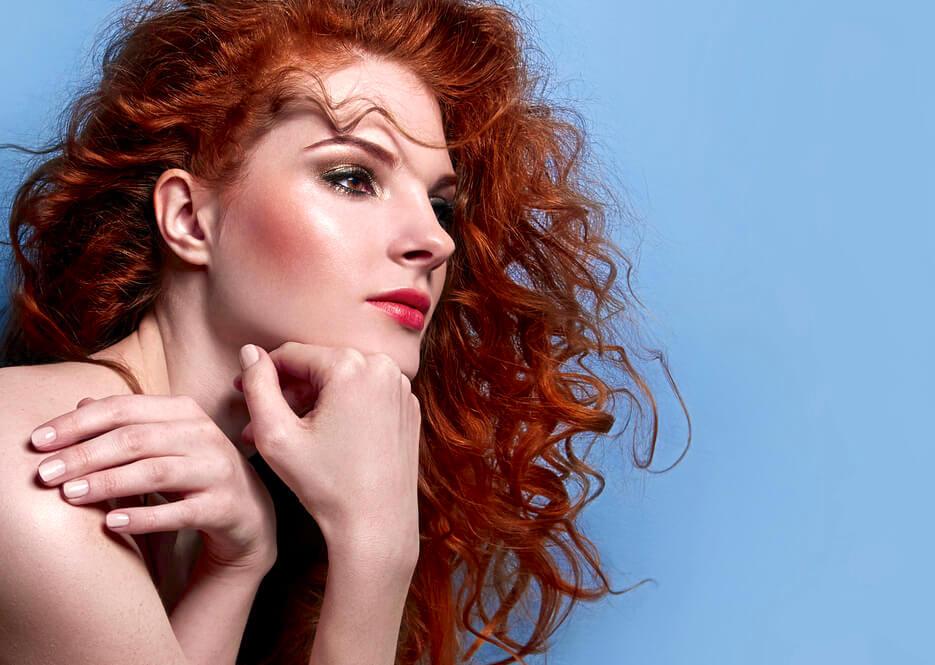
Girls whose hair falls in the 2c hair category typically have locks with a loose, but well-defined curl.
This subgroup is also most prone to frizz out of all type 2 hair categories, so keeping your curls shiny and pronounced will definitely require extra TLC.
You can achieve this by shampooing your hair with a product that is free of sulfates, then applying a conditioner rich in moisturizing ingredients. Your hair should also be deep conditioned every once in a while, which will help detangle your curls and leave them feeling supple and soft.
As far as styling goes, make sure to saturate your hair with products while it’s wet to achieve the silky, yet structured curly look. Always go for styling products that do not contain alcohol and remember to take your time when diffusing.
Type 3a
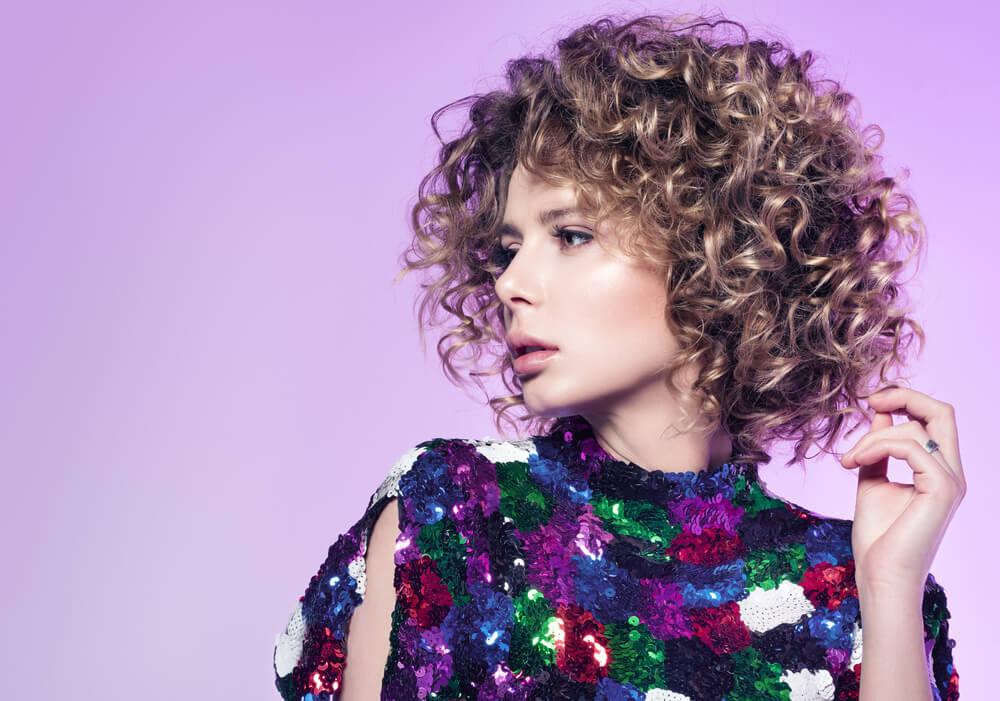
Type 3a hair is characterized by tight spirals or ringlets that form from the top of the head.
The curls also tend to have a lot of volume and bouncy texture. The good news for women who fall in this category is that 3a hair does not require a lot of styling; curls can remain tamed and well-defined with very little effort.
Still, you should make sure your hair is well-nourished by treating with products rich in moisture. Don’t forget to give your hair extra loving with deep and leave-in conditioners, as well as moisture-packed oils.
For day-to-day styling, turn to alcohol-free, curl-enhancing mousse that will give your locks extra volume and definition, but also help you manipulate your hair and shape it into your preferred style.
Type 3b

This type of hair tends to have a lot of body and bounce, provided by well-defined, spiral curls.
Even though this hair type is not as tightly curled as 3c, it still needs to be properly cared for to avoid breakage and dryness.
A simple “wash and go” method can go a long way to saturate your locks with all the moisture it needs. You can also keep a water spray nearby and spritz it whenever your curls are feeling parched.
Type 3c
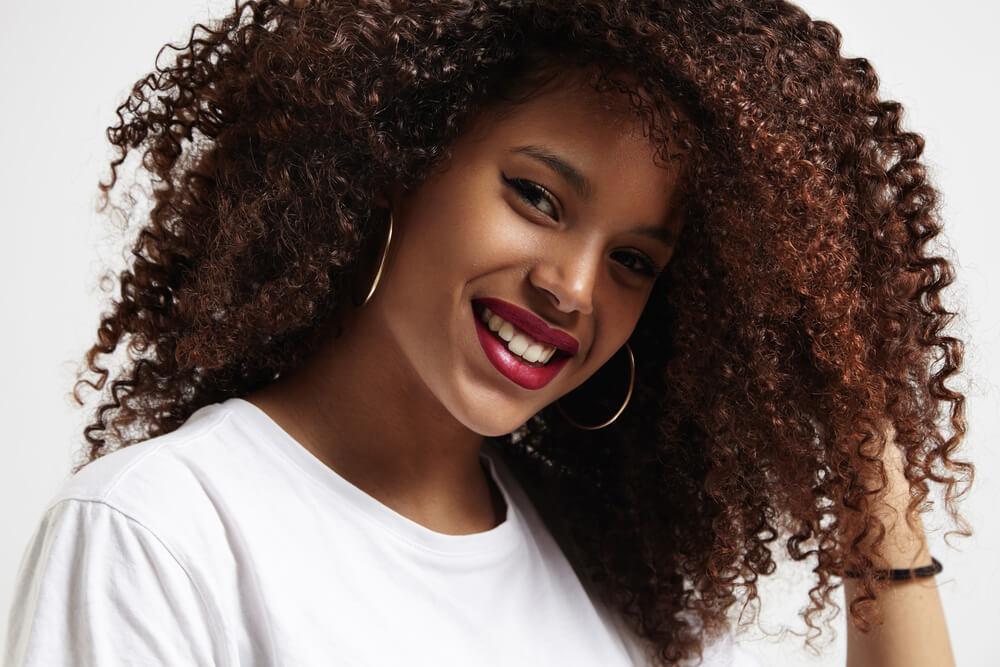
The last subgroup of type 3 hair is characterized by an even tighter curl, with a circumference the size of a straw or pencil.
It tends to have more volume and texture than 3b, but is also coarser and more fragile. Out of all type 3 categories, 3c hair is the most prone to dryness, frizz and breakage.
This is why this type of hair can benefit a lot from moisturizing products that can also help you shape your coils into perfection.
When it comes to cleansing, the shampoo you use should be able to remove all the dirt and grease without stripping your curls from their natural moisture.
To combat dryness, try to deep condition your hair at least once a week, using a product that’s enriched with hydration-boosting ingredients like coconut and jojoba oil.
The appearance of type 3c can be instantly enhanced with curl creams, which you can use to perk up your ringlets while avoiding over-washing your hair.
Type 4a
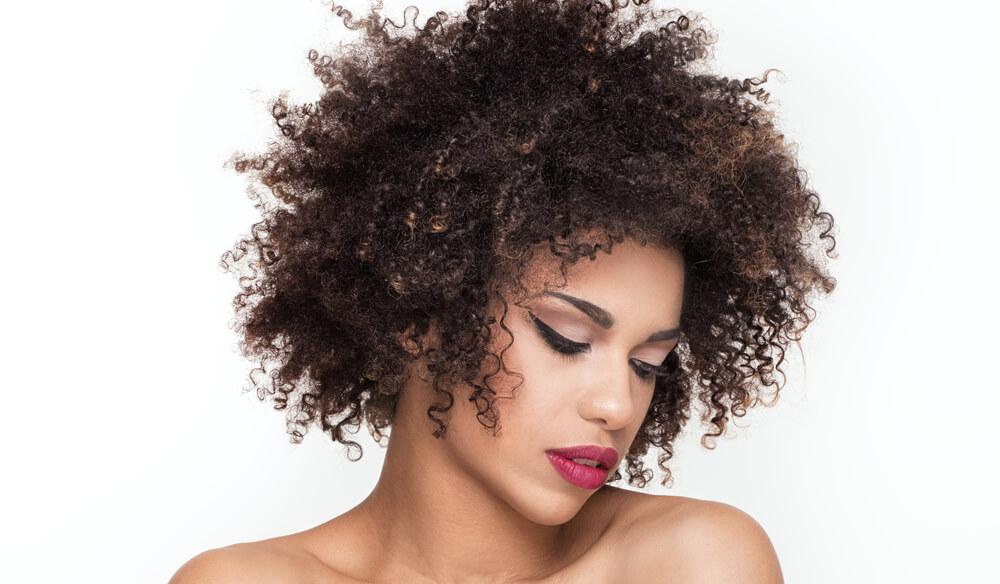
Type 4 hair tends to be notably textured, with tight coils that are thickly packed together.
When it comes to 4a hair, this type is characterized by a visible S-shaped curl pattern, which can be clearly seen if you pick one strand with your fingers and stretch it out.
Since the coils densely packed and very fine in texture, 4a hair is prone to tangling and breakage.
In order to prevent your locks from drying out becoming damaged, it’s of crucial importance to replenish your hair with moisture by establishing a dedicated hair routine. This should include gently shampooing your hair (with focus on your scalp and roots) with sulfate-free products. Next, boost your locks’ moisture levels and eliminate frizz with a deep conditioner that contains jojoba, avocado or tea tree oil.
If your hair tends to be even drier that usual, you might want to include moisturizing into your everyday routine. Coconut oil is incredibly potent at hydrating the shaft of the hair and locking in the moisture.
Type 4b
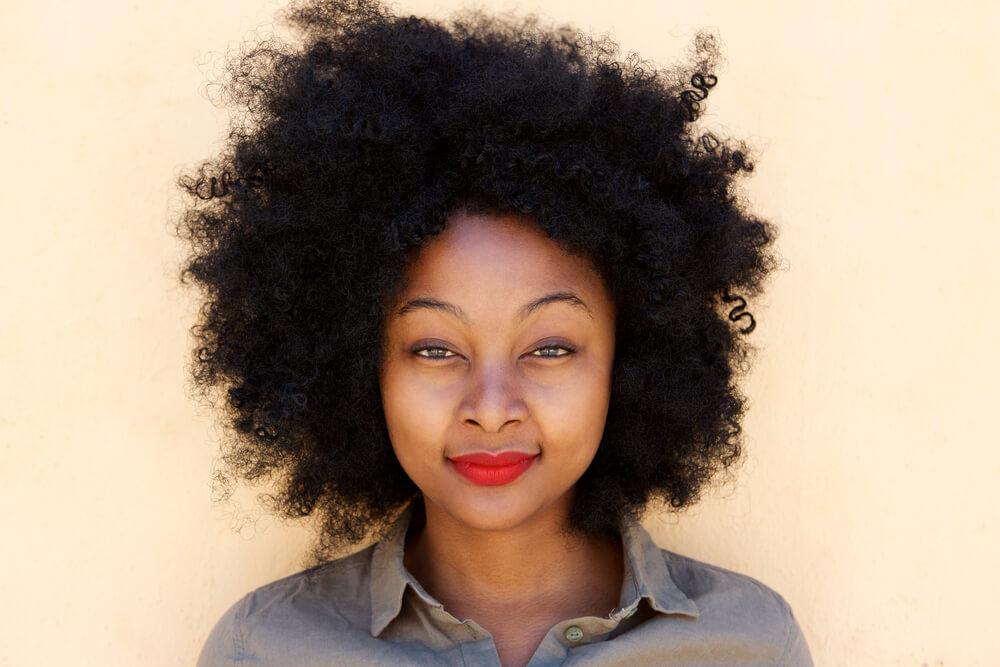
Unlike the 4a type, which is defined with tight S-shaped coils and ringlets, type 4b tends to have Z-shaped strands that are even more densely packed. Furthermore, 4b doesn’t have as defined curl pattern, but it does have even more volume compared to 4a.
As this hair type is also susceptible to drying out and breaking, taking proper care of your natural hair is the key to growing gorgeous, healthy locks.
Start off by cleaning your hair with a shampoo that is packed with naturally-derived ingredients. Make sure to regularly deep condition your hair with a formula that will penetrate deep into your strands without weighing them down.
Maintain your locks by moisturizing them daily with a potent, yet lightweight product that will give your curls an instant boost.
Type 4c

This type is the most tightly coiled out of all hair types.
Due to its structure, this type of hair is prone to intense shrinkage, which may make the hair appear much shorter than it actually is. As 4c type coils tend to be incredibly tight, the natural oils produced in the scalp only tend to travel a couple of inches down the strand, making this type of hair extremely susceptible to dryness and breakage.
Ensuring your hair is always moisturized is crucial if you want to keep your 4c locks healthy and glowing.
Not only does type 4c require regular moisture, you also need to lock in all your hard work by adding an extra layer of oil, butter or gel on your strands. When moisturizing your hair, pay extra attention to the tips, as they tend to be the most brittle. If they keep breaking, make sure to trim them regularly.
Hopefully, this short guide managed to detangle some of the most common confusions and dilemmas when it comes to different hair types. With all this fresh knowledge in your hands, you can now make the first steps towards growing those strong, sensual locks you’ve always dreamed of.

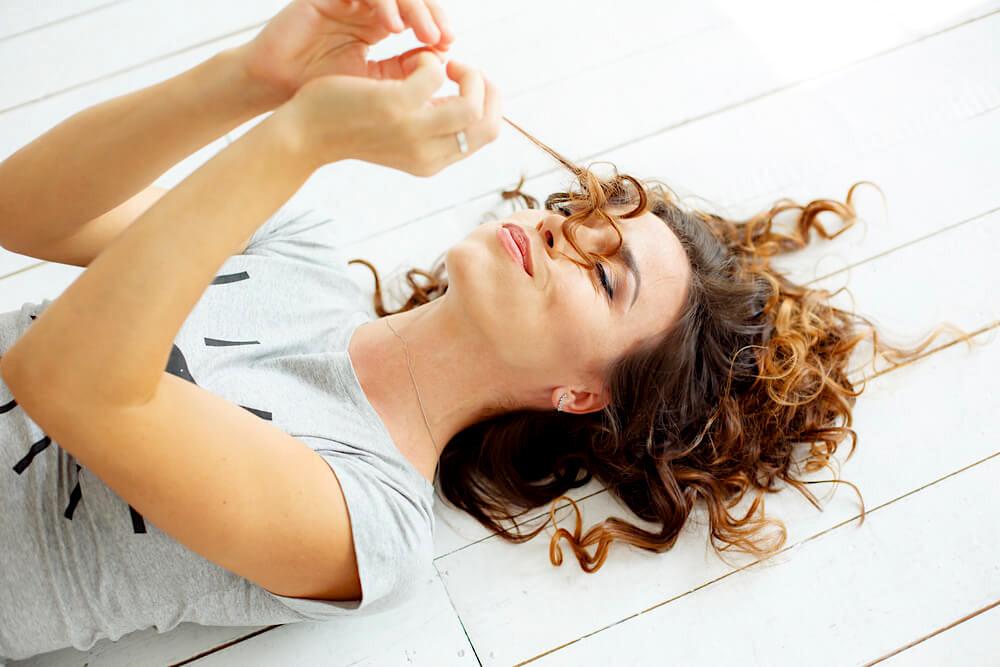
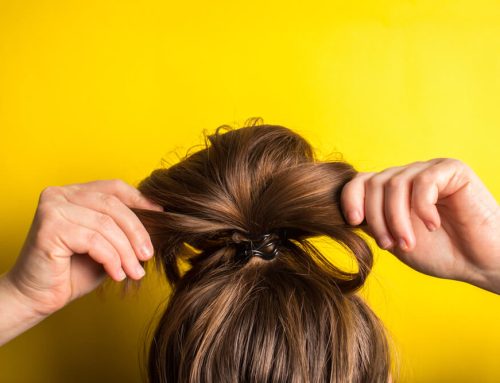
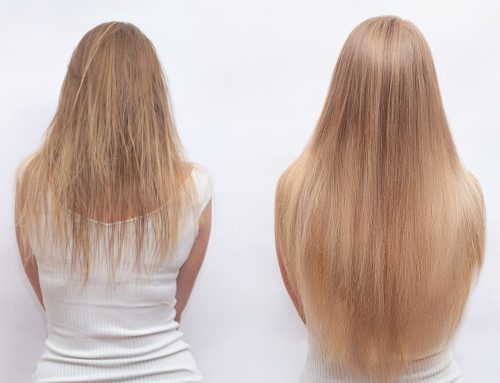
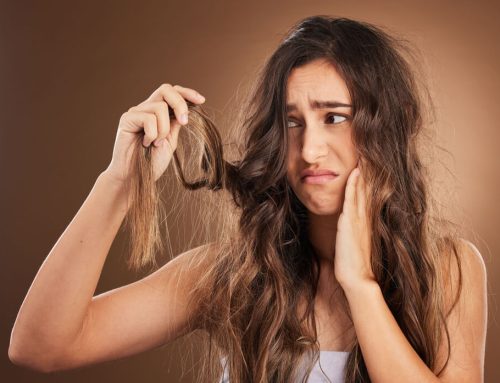

Leave A Comment